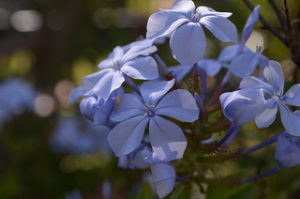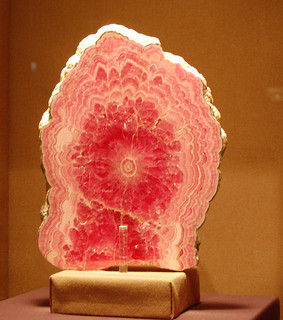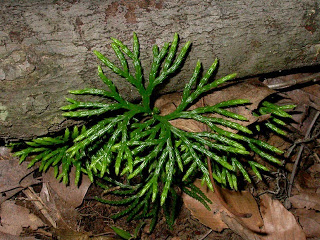
This is perhaps the best time of year to visit the Farmers Market, with the tables and baskets full of tomatoes, red peppers, and colorful squash gleaming in the sunshine. Many mid- to late summer favorites belong to three groups: the family Cucurbitaceae, the family Solanaceae (or the nightshades), and the genus Prunus, which is in the family Rosaceae. This is the first in a series of three posts that will appear this month on the names of these delicious edibles.
We’ll start with the Curcubitaceae because really, who doesn’t appreciate a good cucurbit? (It’s pronounced cue-CUR-bit, by the way.) They take their name from the Latin word for gourd and include the cucumber, summer squash (zucchini and yellow squash), winter squash, cantaloupe, watermelon, and pumpkin.
Squash, summer and winter, including pumpkins, are New World fruits that belong to the species Cucurbita pepo. Botanically speaking, they’re fruits, not vegetables, because they are essentially the ripened ovaries that develop from the plant’s flowers. Vegetables, on the other hand, are edible parts of plants that do not include the ovaries. In fact, botanists use the name pepo for a particular type of fruit, a berry with a thick rind and fleshy center, because it’s characteristic of this species.
Cucurbita pepo was one of the first plants domesticated in the Americas, upwards of 10,000 years ago. The English word squash derives from a Narragansett word, askutasquash. (The 17th century seems like yesterday when you put it in the context of 10,000 years of agriculture.) At a conservative estimate, there are a bezillion varieties within this species, so I’ll mention only one of my favorites. The zucchini was developed in Italy long after the species was introduced from the Americas; its name is the diminutive of zucca, for pumpkin or squash.1 In France, the UK, and Ireland, it’s called a courgette, which is the diminutive of the French word for squash, courge.
Unlike the squash, the cucumbers and melons are Old World fruits. If you start to research the history of cucumbers, one of the first things you’re likely to learn is that the Roman emperor Tiberius was so enamored of Cucumis sativus, the cucumber that graces our tables today, that portable raised beds were used to make them available year-round. These contraptions were wheeled about to catch the sunshine and covered to protect the plants in cold weather. (Sativus, which means cultivated, describes plants that have been domesticated; we’ll see it in other names as well.)
This seems like a lot of work just to have cucumbers all year.2 Tomatoes, yes, or basil, or raspberries, but cucumbers? Well, evidently yes, but probably not Cucumis sativus. A 2008 paper suggests that for centuries the word cucumis (and other terms in Greek and Hebrew) were erroneously translated or misunderstood. The evidence from written works and images of the time indicates that people living around the Mediterranean were actually eating what we would today call Armenian cucumbers (aka snake melon, snake cucumber, or “those big long ones you see sometimes at the grocery store”).
The Armenian cucumber is a variety within the genus Cucumis melo, which is mostly muskmelons. (Technically, it is a muskmelon, but it’s hardly a representative one.) The muskmelons, like the squash, come in a dizzying array of varieties, from the musky-smelling cantaloupe to the less fragrant honeydew (a member of the cultivar group Cucumis melo Inodorus). The species name melo ultimately comes from the Greek word melopepon, which combines the word for apple (melon) and gourd (pepon). (The name pumpkin also came indirectly from pepon.)
Watermelons, which differ markedly from the muskmelons, are another species entirely, Citrullus lanatus, which originated in Africa. Because the average watermelon contains more than 90% water, the source of the common name is obvious. Citrullus is probably derived from a Latin name for a type of cucumber (maybe we’re starting to chase our tails here). Lanatus, the Latin word for woolly, describes the hairy leaves and stems of the plant.
Next week we’ll continue our trip through the Farmer’s Market by looking at the nightshades. Bon appétit.
See Part 2: Nightshades and Part 3: Drupes.
1 The Italian words are actually zucchina (singular) and zucchine (plural); these words are feminine in gender. However, the masculine form (zucchino, zucchini) is also used in Italy. This information may be useful to those people who like to talk about having one spaghetto.↩
2 I like cucumbers, but I can live without them in the winter. In 1917, Good Housekeeping responded to a reader’s question about whether cucumbers are safe to eat with even fainter praise: “There is not enough nutriment in cucumbers to make any fuss about, but they are a condimental substance and are perfectly wholesome when properly masticated.” (Vol. 65, July-December 1917) I think they’re not quite as nutritiously null as Good Housekeeping thought back then.↩
Learn more:
- The Squash Glossary from The Nibble runs to three pages.
- The Melons page from the Cook’s Thesaurus lists a respectable number of melons.
- The entire 2008 paper on cucurbits in the Roman Empire is available.






